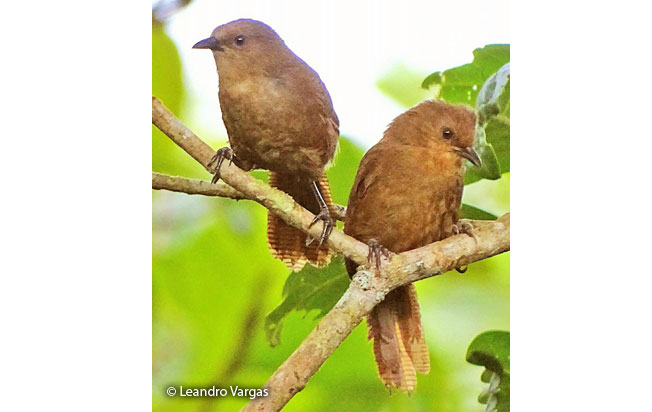Order: Passeriformes | Family: Troglodytidae | IUCN Status: Least Concern

Age: Adult | Sex: Unknown | Loc. Eastern Andes of Colombia

Age: Adult | Sex: Unknown | Loc. Eastern Andes of Colombia

Age: Adult | Sex: Unknown | Loc. Eastern Andes of Colombia

Age: Juvenile | Sex: Unknown | Loc. Eastern Andes of Colombia
Status: The Sharpe’s Wren is fairly common in the understory of montane forests of the east slope of the Andes. It has geographically restricted population north and also south of the Marañon Valley ranging at elevations between 500-1400 m. It also occurs in Co, Ec, Br, and Bo.
Name in Spanish: Cucarachero de Sharpe.
Sub-species: Sharpe’s Wren (Cinnycerthia olivascens olivascens), Sharpe, 1882.
Meaning of Name: Cinnycerthia: One that resembles the Genus Cinnyris Cuvier, 1816 and the genus Certhia Linnaeus, 1758. olivascens: L. olivascens, olivascentis= somewhat olive.
 Voice
VoiceReferences:
-
- Species range based on: Schulenberg, T. S., D. F. Stotz, and L. Rico. 2006. Distribution maps of the birds of Peru, version 1.0. Environment, Culture & Conservation (ECCo). The Field Museum. http://fm2.fieldmuseum.org/uw_test/birdsofperu on 03/01/2016.